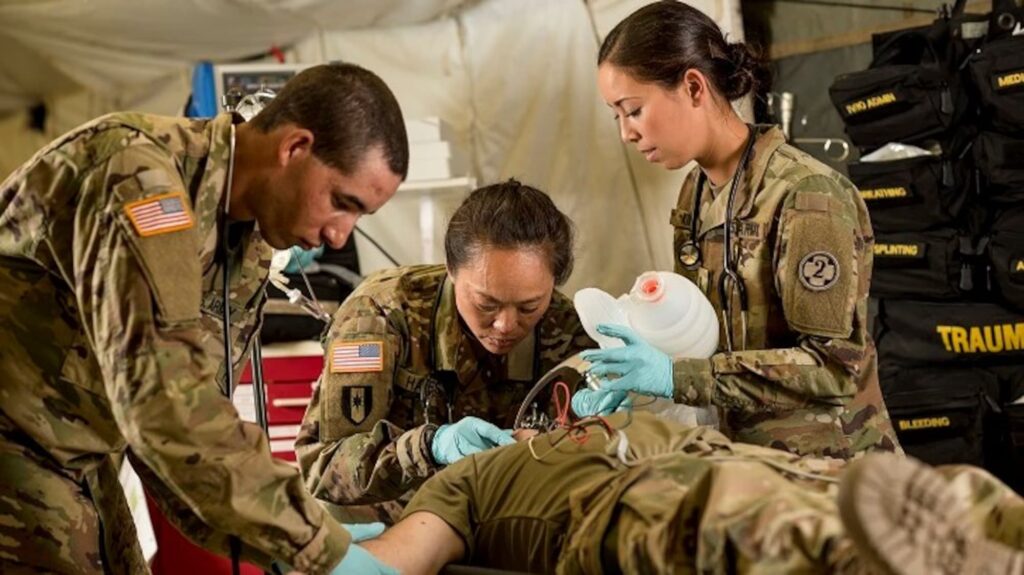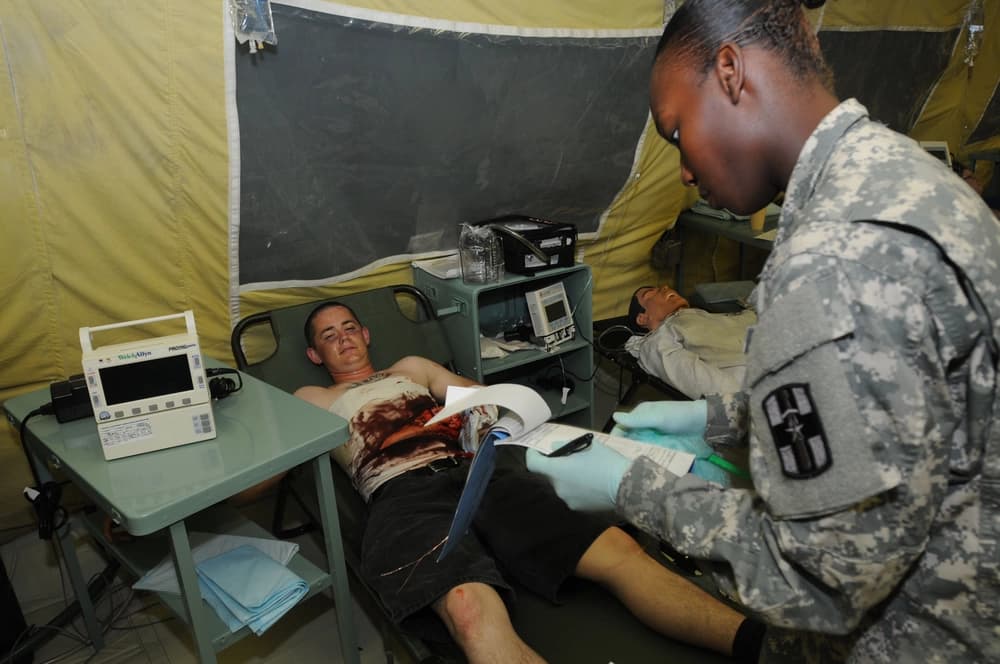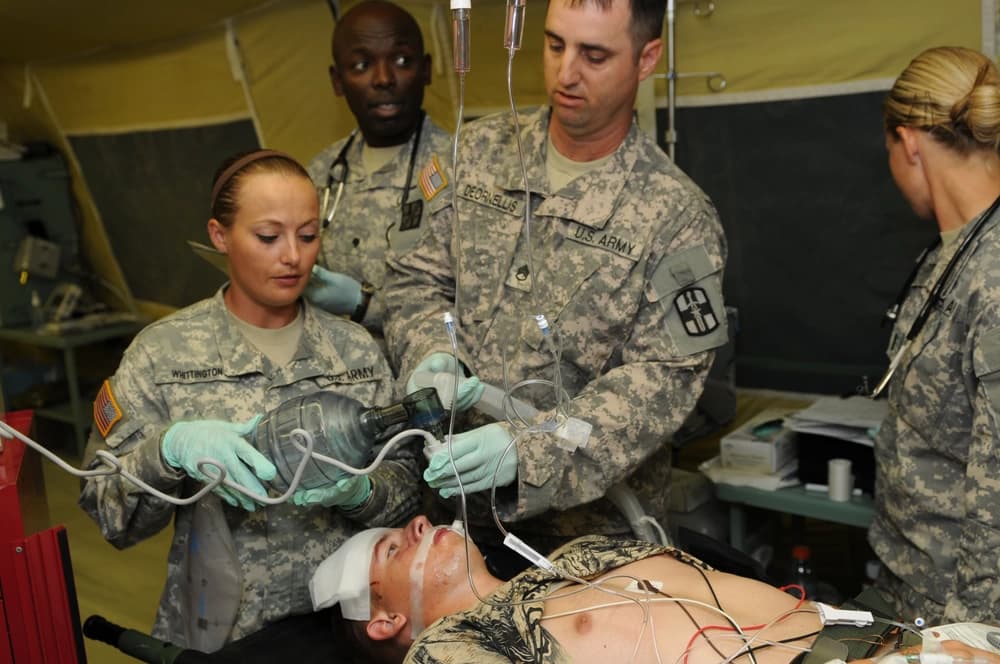Military Healthcare Administration involves managing military hospitals, clinics, and other healthcare facilities. It can be a career field for both officers and enlisted personnel, though the military offers different positions in this area depending on the branch. If you are interested in becoming a healthcare administrator, check out your service branch’s internal job postings for more information about the position and requirements.
Healthcare administrators are needed to help the military keep up with the demands of a changing healthcare environment. The challenges include an aging population, new technologies, and staff shortages. In addition to the basics of leadership, management, and policy, a healthcare administration degree program can deliver several specializations that address specific concerns.
Look for military-friendly colleges that offer a tuition break and prioritize admissions for vets. These schools can be the key to getting your degree faster and making the most of your VA benefits. They can also provide advice that helps you navigate the maze of paperwork and nuances associated with a military education. This support can be invaluable, especially if you are a direct commission officer who will need to make the best use of time between obstacle course training and leading troops in combat. A military-friendly school will also have a good relationship with the Military Health System, a network of care that serves more than 9 million active duty service members, their families, and retirees.

How does the Military Healthcare Administration work?
Military healthcare administration is a field that involves a wide range of duties. These include providing health care and treatment to active-duty service members, veterans, and their families. It also includes maintaining records and following the rules and regulations that affect patient care and conduct. This is done to ensure that all patients receive high-quality, cost-effective health care.
There are several programs that the military offers for those seeking to pursue a career in healthcare administration. These include sign-on bonuses, loan repayment, and other incentives to help with educational costs. In addition, some schools offer tuition discounts and priority admission for military personnel. These are known as military-friendly schools.
The Air Force has a number of programs to help its service members with their education, including the blanket Student Loan Repayment program. However, it does not cover the cost of all undergraduate degrees. However, it does cover up to two years of graduate school. This allows the Air Force to recruit top talent while helping service members pay off their debt.
The Air Force medical system operates a network of facilities that are governed by the same requirements as the Army and Navy systems. These include a requirement to maintain operational readiness at all times. The Air Force medical system also complies with Department of Defense (DoD) access priorities, which are designed to improve and enhance the quality of care provided at the MTF level.
Military Healthcare Administration Responsibilities
The military healthcare administration workforce is diverse, including uniformed service personnel and civilians in the Department of Defense. The responsibilities of healthcare administrators include managing the functions of hospitals, clinics, and other military healthcare facilities. Healthcare administrators are required to ensure that all military personnel and their families receive the quality care they need in support of the nation’s security. The Bachelor of Science in Healthcare Administration from American Military University equips you with the skills you need to become a leader in the field of healthcare administration.
The Director of DHA leads the CSA by developing and executing policy to enable the MILDEPs to provide medically ready forces and ready medical forces to combatant commands (CCDR) during wartime and peacetime, in accordance with References (a) and (b). Specifically, DHA supports the National Defense Strategy and the strategic needs of the MILDEPs through management of the suite of TRICARE health plans; direct management of MTFs; and oversight of MHS ancillary services and purchased care.
The DHA’s supporting and special staff elements manage the execution of assigned responsibilities (JCA 8.1). These include the PIO, PID, and Force Resiliency Office. The PIO reports to the DHA CoS and advocates OASD(HA) and Director priorities to Congress and DoD. The PID provides oversight, coordination, and synchronization of DA-related programs and activities across the DHA, including medical and military EEO, diversity management, sexual assault prevention and response, anti-harassment, and countering extremism.

What is the Army Health System?
As a soldier, you’ll receive health care that’s better than what civilians pay for. The TRICARE system covers medical, dental, and pharmacy expenses for yourself and your family. You’ll also have access to mental health, home healthcare, and skilled nursing facility care. You’ll get competitive pay and bonuses, along with money for education and training, student loan repayment assistance, housing, and living expenses.
Military health systems are facing unprecedented challenges, from the COVID-19 pandemic to force realignment and reorganization, to persistent staff shortages. The challenges — including a growing number of wounded and sick service members requiring more complex and more expensive procedures – have made it more important than ever to provide the highest quality care possible.
The Army’s military healthcare system is organized into ten levels of medical treatment support that extend from the point of injury or wounding to the continental United States (CONUS) base. Each level reflects an increase in capability.
The Army medical department has a comprehensive health services administration that includes area support, medical evacuation, medical regulating, hospitalization, preventive medicine, dental, veterinary, and combat operational stress control services. In addition, it has a logistics management system for the distribution of resuscitative fluids and blood products throughout the theater. This system relies on a chain of command that begins at the battalion aid station (BAS) and ends at supported medical treatment facilities (MTF). The theater blood support system also depends on USAF blood transshipment centers for the distribution of liquid blood to Army BSDs
